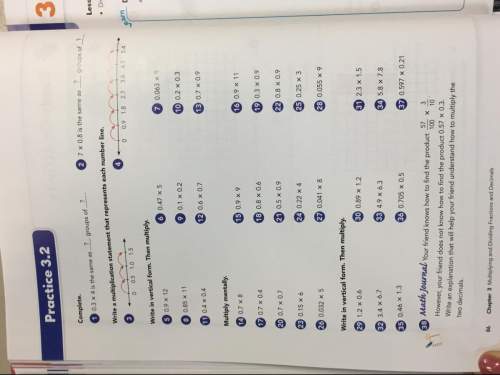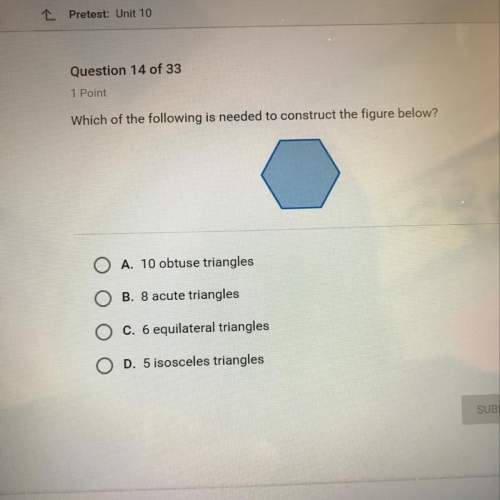
Mathematics, 11.05.2021 21:40 linaaaaa7
A rectangle has vertices (–1, 1), (–4, 1), (–1, 3), and (–4, 3). If the rectangle is rotated 90° clockwise, what algebraic rule can be used to find each of the new vertices?
(x, y) → (–y, x)
(x, y) → (–y, –x)
(x, y) → (x, –y)
(x, y) → (y, –x)

Answers: 2


Another question on Mathematics

Mathematics, 21.06.2019 19:00
How can you tell when x and y are not directly proportional?
Answers: 1

Mathematics, 22.06.2019 00:30
Graph a point. start at your origin, move left 10 units, and then move up three units which ordered pair is the point you graphed
Answers: 2

Mathematics, 22.06.2019 03:30
Solve the equation for y. -1 = 1/3y + 11. will give 5 stars if answered correctly!
Answers: 2

Mathematics, 22.06.2019 04:00
In a fruit survey, 300 children choose their favorite fruit out of apples, bananas, and watermelon. 150 chose apples and 90 chose bananas. what percent chose watermelon?
Answers: 1
You know the right answer?
A rectangle has vertices (–1, 1), (–4, 1), (–1, 3), and (–4, 3). If the rectangle is rotated 90° clo...
Questions

Mathematics, 14.11.2019 21:31

Geography, 14.11.2019 21:31

Biology, 14.11.2019 21:31

History, 14.11.2019 21:31

Health, 14.11.2019 21:31



Mathematics, 14.11.2019 21:31


Biology, 14.11.2019 21:31





English, 14.11.2019 21:31









